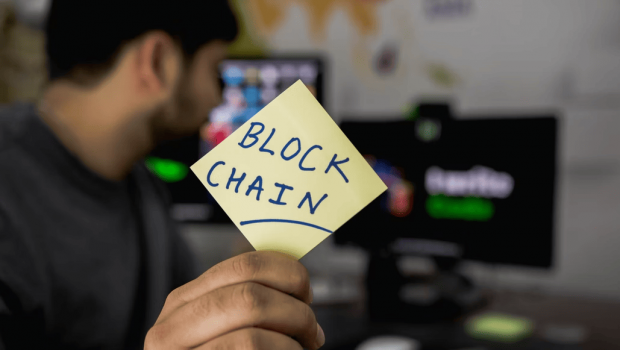A beginner’s guide to blockchain technology
In this digitized world, blockchain technology is one of the topics that is bound to turn heads. 96% of financial experts believe that blockchain technology has already achieved mainstream adoption. But is blockchain related to cryptocurrency only? Let’s find out in this beginner’s guide to blockchain technology.
What is Blockchain Technology?
Blockchain is an immutable, distributed ledger used to record transactions and track assets across a network of computers, called nodes. It provides a secure method of storing information that prevents anyone from changing, hacking, or cheating it. The blockchain serves two major purposes to any business or process it is deployed – decentralization and disintermediation. Each node has a copy of the blockchain database, which removes any single point of failure. All the nodes validate the transactions before storing them into blocks, removing the need for a central party. Transactions on a blockchain happen directly between nodes or network participants, removing the need for any middlemen.
Any business process that can benefit from decentralization can invoke blockchain utilities to its own advantage to make the system faster, economical, transparent, and secure.
How Does Blockchain Work?
To understand how blockchain works, you must know some of the fundamentals of blockchain, such as blocks, peer-to-peer, mining, etc., work:
#Peer to Peer Transfers
Peer-to-peer (P2P) refers to the direct exchange of some asset (such as digital currency) between individual parties without the involvement of a central authority or a middleman. In a digital peer-to-peer network, each user is essentially an equal owner and contributor to the network. This type of network can be used for almost any type of information or file-sharing. Blockchain enables what P2P advocates: secure transfer of data without a middleman.
#Blocks
Blockchain technology stores transactional records in groups known as blocks. These blocks are connected to each other to form the ‘chain.’ This type of storage is commonly referred to as a ‘digital ledger.’ Every transaction in this ledger is authenticated and made secure via a combination of cryptography, consensus mechanism, and digital signatures. There are restrictions on how data can be added. Once stored, it is nearly impossible to change or delete it.
#Nodes
Nodes are network-connected computers that store copies of the blockchain data and share the information with other nodes or computers. Users are not required to manage these processes on nodes manually. In general, they only need to download and run the blockchain software, and the rest is handled automatically.
#Hash and Nonce
Each block of a blockchain has its own unique identifier, a cryptographic ‘hash.’ The hash not only protects the information within the block from anyone who does not have the required code, but it also signifies the block’s position along the chain by identifying the block that came before it. The hash is a 256-bit number that is tied to the nonce.
A nonce is an arbitrary number used to distinguish the hash address of a block. It is a 32-bit whole number. Hash codes are generated by a mathematical function that converts digital data into a string of numbers. If that information is changed in any way, the hash code changes as well.
#Mining
A nonce generates the cryptographic hash when the first block of a chain is created. Once mined, the data in the block is considered signed and forever linked to the nonce and hash. Miners use the mining process to add new blocks to the chain. Miners use specialized software to solve the incredibly complex math problem of generating an accepted hash. When a block is successfully mined, the change is accepted by all network nodes, and the miner is rewarded with newly mined coins.
#Cryptographic Keys
Cryptographic keys are made up of a combination of two types of keys: private and public. These keys aid in the completion of successful transactions between two parties. Each participant possesses these two keys. They use these keys to generate a secure digital identity reference. The most important aspect of blockchain technology is its secure identity. This identity is known as a ‘digital signature’ in the world of cryptocurrency and is used for authorizing and controlling transactions by using cryptographic keys.
Use cases of Blockchain Technology
Today we can imagine a world in which contracts are embedded in digital code and stored in transparent, shared databases that are protected from removal, tampering, and revision with the help of blockchain. Every agreement, process, task, and payment in that world will have a digital record and signature that can be identified, validated, stored, and shared. Lawyers, brokers, and bankers may no longer be required as intermediaries.
Blockchain technology has a wide range of real-life use cases. From the health sector to the education sector, blockchain technology has the potential to bring revolution to our daily lives. For instance, companies like Chronicled and Curisium offer blockchain-based systems through which various players in the healthcare sector are optimizing their processes. These players include pharmaceutical companies, medical device OEMs, wholesalers, insurers, etc. Healthcare providers can authenticate their identities and track transactions of goods and services, as well as payment settlement details for those goods and services using blockchain technology.
This was just one use case for blockchain. Blockchain’s utilities expand beyond fintech and healthcare. Sectors like education, supply chain, real estate, record-keeping, gaming, voting, cloud storage, etc., can use blockchain utilities to their advantage. For instance, Blockchain in manufacturing is expected to grow at a rate of 73% between 2022 and 2026. Currently, blockchain platforms and utilities like dApps, Defi, NFTs, DAOs, cryptocurrencies, etc., are writing the next chapter of the internet – Web3. Blockchain is beyond cryptocurrencies, it is the new pillar of the digitized world.
This article is authored by Saudamini Chandarana Bhat, Editor at WazirX.








Gloss